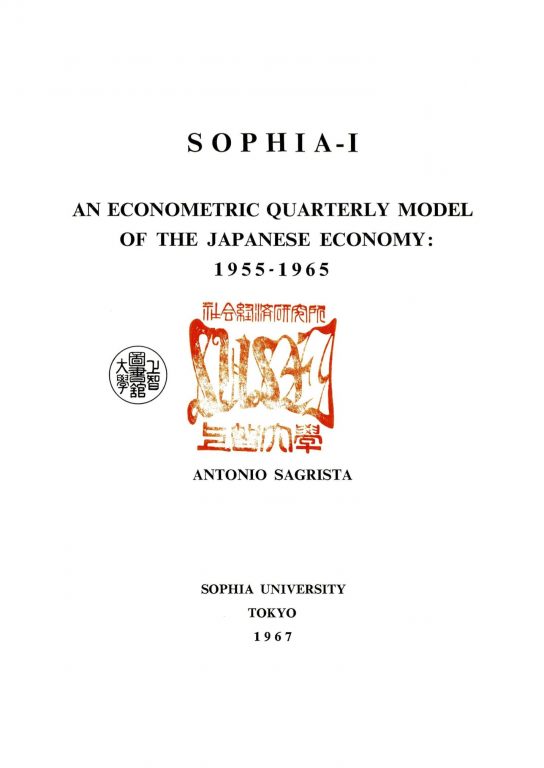Sophia-I, An Economic Quarterly Model of the Japanese Economy: 1955–1965Antonio Sagrista
Other Books (1967) pp. 1–231
This book intends to present, as far as it is possible, an up-to-date econometric model of the overall Japanese economy which could be used either to study economic behavior, or to guide economic policy or to help short-run forecasting. Preliminary work on the econometric model was started several years ago, but a more intensive effort did not begin until 1964, after my return to Japan. The model has been named SOPHIA Model-I: “SOPHIA” because the model has been built under the general sponsorship of Sophia University (Jochi Daigaku) in Tokyo, and “Model-I” because it is hoped that it will be the first of several modified, enlarged and improved versions of it. Hereafter this model will be referred to as SOPHIA-I.
As seems inevitable in economic research with contemporary statistical series, past results quickly become modified by revisions of the data: moreover, observations that were almost up-to-date observations when the research started, become seriously outdated after a few years. In order to cope in some way with this problem, it was planned to do the research described in this book in two steps: the first one implied the building of a test or pilot model based on a time series sample period spanning 28 quarters from July 1955 to June 1962; the second step consisted in updating the basic model by bringing the end of the sample period up to December 1965 and recomputing and modifying, when necessary, the pertinent equations of the pilot model. This last version of the model, which includes the latest available data and covers a period of 42 quarters is called the current model. This current model was used for short-run forecasting of several economic magnitudes up to the end of fiscal 1967, i.e. the end of March 1968.
1967. 231 pages.
Paperback. [Out of print]
